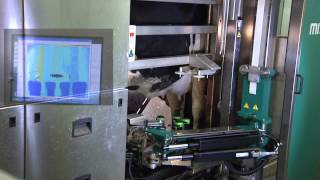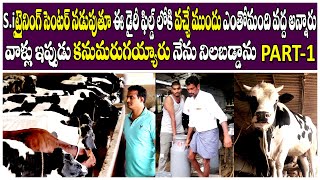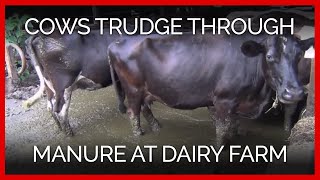Friday, 19 December, 2025г.
















Где искать: по сайтам Запорожской области, статьи, видео ролики
пример: покупка автомобиля в Запорожье
New Robotic Milker at LaMaster Dairy Farm
Transcript:
Clemson University Dairy Farm Manager, Steve Waggoner, speaks alone throughout the video in a white room with windows. Through the windows, you can see the robotic milking machine occasionally moving and milking cows. At intervals throughout, the on screen interview cuts to footage of the LaMaster Dairy Farm at Clemson University. The robotic milkers are shown in action milking the cows close up; cows are shown lying in sand beds, being scratched by a rotating scratcher, being cooled by sprayed water and fans, and eating hay; and the monitoring readings on the robots and computers are shown. Soft, innovative-sounding music is playing in the background. The video ends with a closing Clemson graphic of a white Clemson paw logo on orange background.
Transcript:
We started out about five years ago designing it and it was designed for total care comfort. Well, it actually milks the cow, you individually and you can actually get individual information on every cow. The robotics run 24/7, they'll milk a cow now, two hours, 10 hours from now where we don't have to have actual manual labor to milk the cows in five, six seven hour shifts. That's an advantage to cow comfort, too. They can come and go where people are not actually moving them manually and causing more stress. We're averaging about 2.9 to 3.0 visits a day over the whole herd. Fresher cows, cows that just calved more recently are coming five, six times a day.
It has all the information that you would ever want. It has conductivity, activity, anything to do with milk production. It tells you when a cow's off in milk production and possibly flag this cow when she's getting sick. So you have the advantage of this technology to help you take care of problems with animals quicker and faster and maybe diagnose and treat animals before they really have a lot of problems.
Well, as far as Clemson's concerned, we feel like we want to be on the latest technology there is available, and this is something we're hoping the students can actually get some knowledge to be trained in because this is, these robotic systems are coming very fast in the dairy industry. We hope to and we think we will see milk production increase after we get this system up and running, probably in 6 months to a year, plus we should see more longevity in cows. We also see this as a plus to South Carolina dairymen too. I think a year from now we'll be able to tell a lot of difference in what we've seen improvements in or deficiencies in.
Теги:
Clemson University PSA South Carolina Cooperative Extension dairy milk dairy farm cows robotic milker robotic milk cow cow comfort cow care
Похожие видео
Мой аккаунт


 У вашего броузера проблема в совместимости с HTML5
У вашего броузера проблема в совместимости с HTML5


